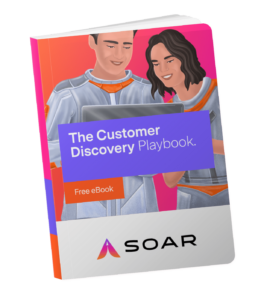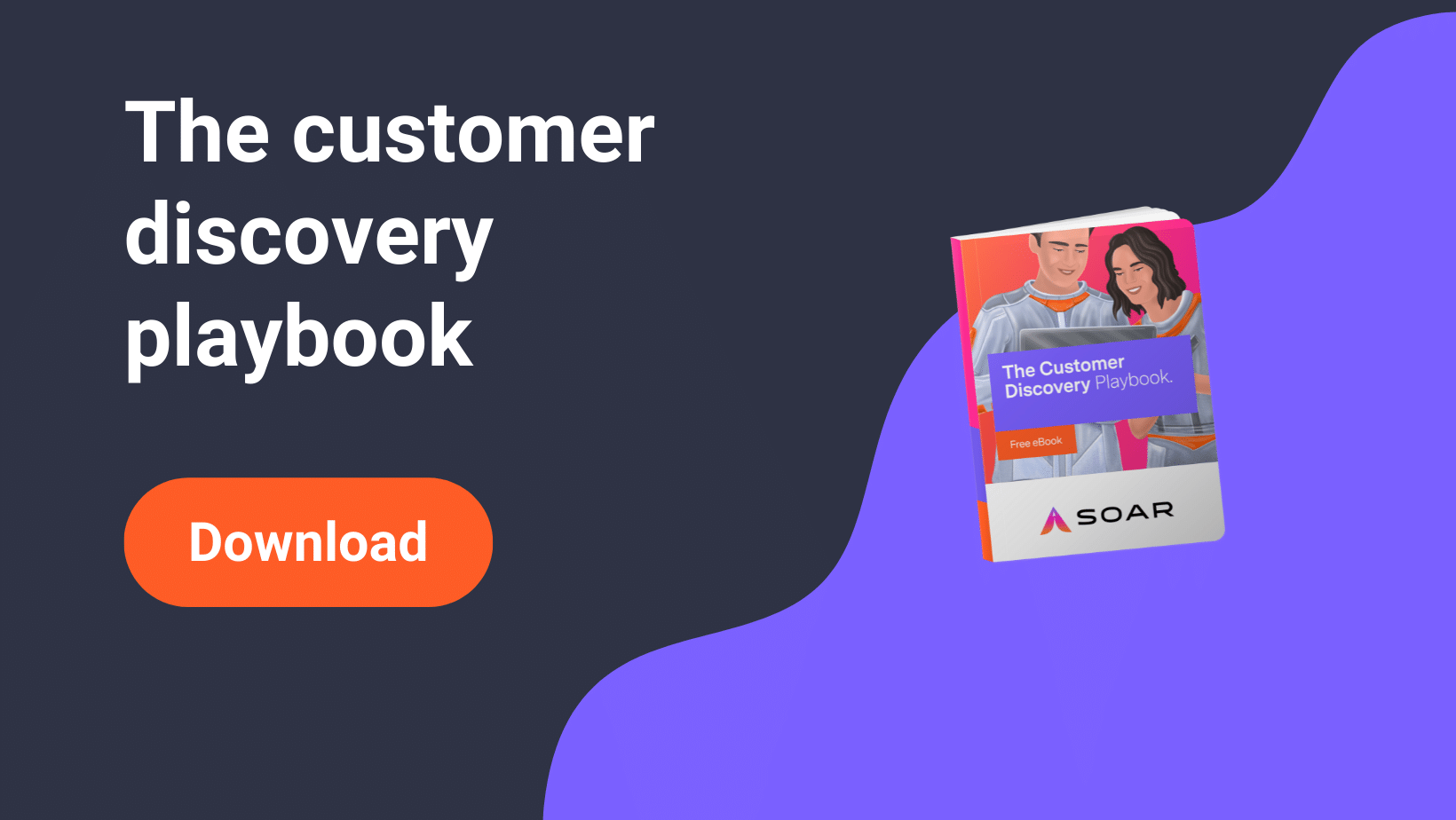When starting a new business, launching a new product or content, or entering a new market, it is incredibly essential to identify your customer segments.
Understanding who your early adopters are will save you time and money in the long run, all while helping to ensure that your business is set for success. But what is the most effective way to do this discovery?
We will walk you through the customer discovery process, specifically:
- how-to’s of customer segmentation;
- business assumption validation – how to do it focused and fast;
- engaging with your potential customers and start growing your early support community.
Without further ado, let’s dive in!
Segmenting your customers & validating assumptions
Customer segmentation
Customer segmentation is the process of separating your customers into groups based on what certain traits (e.g., personality, interests, habits) and factors (e.g., demographics, industry, income) they share.
Your target market can consist of multiple segments – what unites them is they share the same pain (the problem you aim to solve), and your solution would be a fit for them all.
As an early-stage business with limited resources, you can start identifying groups that live within your market – most of the time, your best move is to find the segment that is most likely to adopt your product/service with minimum friction and cost, to take you off the ground. From there, you will be better positioned to acquire other target segments.
For example, let’s assume that you are launching a beauty-on-the-go business and you think that your best suitable customers could be 1) businesswomen, 2) stay-at-home moms, 3) older adults. All three groups seem logically valid – how do you know with which customer group to start?
The answer: Conducting a few simple interviews and doing a few tests to validate your assumptions about each group.
If you need segmentation criteria detailed data – just download our Playbook. We have a data table and steps that will quickly walk you through it!
Validating assumptions
How can you validate your assumptions about customers (or features) further? Assumptions are, essentially, all the things that need to be true for your idea to work. You start by making a list of assumptions. You need to identify the most important thing that needs to be true for your vision to work.
That’s the assumption/hypothesis you will test first. It will be a customer assumption in most cases, and it will be your central feature/product assumption.
Be mentally ready to throw away all other assumptions if your most essential beliefs turn out to be wrong. If you were wrong, you’d have to go back and rethink your business idea.
In this step, your goal is to make sure that:
- Your product solves the concrete pain and delivers a value proposition to the target customer segment.
- As a result, the customers are ready to pay for this product.
- If not, is this the wrong product, or is this the wrong customer? Or perhaps both?
When conducting tests, you have to make sure that you talk to people who match your chosen customer segments. Be ready to hear harsh input and be sure that some people you talk to will disagree with you. And that is ok!
You can never capture 100% of the market. Some people prefer Mac laptops, and some people prefer Microsoft. Start by talking to at least ten people and see if over half of them respond positively to what your concept offers.
Not sure what assumptions exactly you should be validating? We added a list of assumptions every business has to validate and a few more tips on the validation process in our Customer Discovery Playbook.
What you should have in the end is:
- Problem–Solution Fit: You have a problem worth solving, and your solution speaks to the customer when they want to write a cheque or get on your queue for a product that does not exist yet.
- Product-Market Fit: The solution you have made is well received by your identified early adopters.
Value communication
Now you can narrow down your communications around the value you are offering to your target market.
- Value Proposition: Now that you know what and to whom you are selling, you can list the final value you provide to the customer. Tip: Your interactions with the target audience will identify the most critical value propositions. You just have to listen carefully. Sometimes what you think is the central part of your solution is less relevant to the actual user.
- That One Key Feature: Narrowing your feature set down to the one element that is a game-changer is difficult, but it is an absolute necessity. To determine which component you should initially focus on spending time with customers, analyze major emerging trends in the industry, and examine areas where competitors fail to solve problems. The ancillary features can come later as your customers will be willing to wait if your product solves one central pain point they are facing.
Many founders seem to believe that what they have developed is the modern equivalent of magic beans and that people will accept them as payment for a cow. Marc Andreessen writes: “In a great market — a market with lots of real potential customers — the market pulls product out of the startup.”
According to Ben Horowitz, “Product/Market Fit Myths:
- Myth #1: Product market fit is always a discrete, big bang event;
- Myth #2: It’s patently obvious when you have product/market fit;
- Myth #3: Once you achieve product/market fit, you can’t lose it; and
- Myth #4: Once you have product/market fit, you don’t have to sweat the competition.”
One metric for product/market fit is if at least 40% percent of surveyed customers indicate that they would be “very disappointed” if they no longer have access to a particular product or service.
Alternatively, it could be measured by having at least 40% of surveyed customers consider the product or service as a “must-have.” Don’t aim for 40%, though! An ideal result would be 8 out of 10 people respondents saying they would love your product.
Build your online presence
Build up your online presence and funnels that let people discover you! This step looks different for different types of businesses but on a high level, we are talking about:
- a website that speaks to the client leads and converts them to paying clients,
- branding that connects with them on a deep level inspiring them to come back as well as share info about you with their network,
- client communications that build long-term relationships and continuous engagement,
- Community building around your brand and/or product.
The key part here is making sure you properly set up analytics and track the right metrics that help you quickly identify what works and what doesn’t as well as serve as a compass to your growth.
Customer discovery process
Customer discovery process can be a very challenging task, especially if you don’t have much experience with it. We suggest you to go through the questions below and answer them realistically:
- Do I have a proper business model?
- What is my product idea?
- What are my pains and gains?
- Do I have an initial customer persona?
- Who are my target customers?
- How many customers do I expect to acquire within first three months?
- What kind of market research did I do?
Customer development process requires core business assumptions, hypothetical customer persona, to conduct customer discovery interviews and much more. Initial important steps are to have a bulletproof business model and great value proposition. The whole process will not seem that complicated to you anymore 😉
Luckily, there are plenty of tools and resources online that will help you with your customer discovery process.
That’s why we created this customer discovery playbook, to help business owners, entrepreneurs, marketers and whoever might find this useful.
If you need a list of useful reads, videos as well as a to-do list to help you go through the customer discovery process – download our FREE Customer Discovery Playbook. It includes the following information:
- Branding, vision, and mission that connect with your customers
- Landing pages that convert
- Emails that don’t look like spam
- Social media hacks
- Analytics set up – let data validate for you!
- Community building
- Customer metrics everyone should measure

